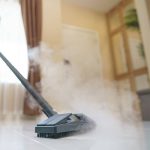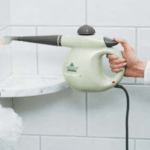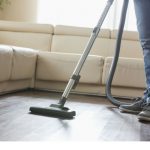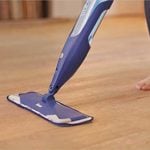Vacuum leaks are one of the problems which are seen most often if you are dealing with different electrical gadgets. When vacuum leaks happen, the engine of your gadgets is filled up with too much air and will result in the engine’s default in the worst-case scenario. That’s why you need to check for vacuum leaks.
There are so many ways to check for vacuum leaks. You can use carb cleaner, starting fluid, etc. But what if you have WD-40 within your reach, and wonder as to how to check for vacuum leaks with wd40?
The process is pretty simple. You can do it on your own without taking help from a professional. It won’t take much time as well. All you have to do is to find the problem and solve it smoothly.
Can I check vacuum leaks with WD40?
Contents
Yes, you can check vacuum leaks with wd40. Well, as you may already know wd40 stands for water displacement 40th formula which contains anti-corrosion properties. This product is a mixture or blend of lubricants and is capable of finding vacuum leaks in your engine if used in the correct way.
Wd40 can be used for many purposes and some of them include cleaning and softening paint brushes, unsticking painted radiator valves, untangling jewelry chains, etc.
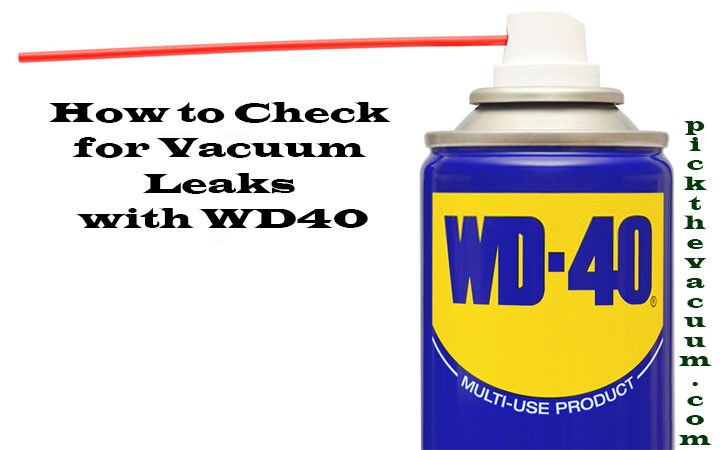
However, you can also check for vacuum leaks in your engine by using the same product. Generally, vacuum leaks refer to the presence of too much air in your engine and hamper its smooth running.
How many ways can you find vacuum leaks with wd40?
The ways or steps to use wd40 in finding out vacuum leaks are easier than it sounds. Look at the following steps which will acknowledge you about the location of the vacuum leaks.
Step 1: start with spraying all over the areas
- AS you have already decided to check for vacuum leaks by using wd40, you may know how to use the product.
- You can just press the handle and the liquid or mixture will come out as spraying.
Step 2: spray over the suspected areas
- You are using wd40 now to look for the vacuum leaks in your engine which is hampering the smooth working of your engine.
- As you are suspecting a vacuum leak, you might as well suspect some areas where the leakage would be located.
- Spray over the suspected areas.
- The vacuum leakage often happens because of the default or crack in hose fittings or fracture in several rubber tubes.
- Spray wd40 in the aforementioned areas of the engine thoroughly.
Step 3: Be keen on the hose fittings
- Your engine has a lot of places where there are used “hose fittings”. Mainly hose refers to either the end of a part or the beginning of another part.
- As the ending or beginning of a pipe or line is connected with each other or others by hose fittings, the vacuum can be leaked in case the fittings are loose.
- Check thoroughly every hose’s fitting and keep spraying wd40 over the fittings.
- If you see that some of the areas are sucking in the liquid, be sure that there lie the vacuum leaks.
Step 4: look at the throttle plate bushings
- Vacuum leaks are often found in the throttle plate bushings of your engine.
- If you think you also have issues with them, then spray the “wd40” product around the bushings and wait for a couple of seconds.
- If you find no oddness, then turn into the intake manifold gaskets for checking.
Step 5: Check the intake manifold gaskets
- The intake manifold gaskets are one of the essential parts of the engine as it ensures whether the vehicle has enough fluid or not.
- The gasket is like the seal which blocks extra air from entering the engine and ensures that the internal fluids can’t escape.
- As this part is like a seal, if being loose for any reason, it can be the place of vacuum leaks and extra air pressure can enter into the engine.
- So, spray wd40 all over the intake manifold gaskets.
- Keep keen eyes on whether the area sucks in the liquid or not. If it sucks in wd40, then be sure that you have vacuum leakage here.
Step 7: Locate the leakage
- After spraying wd40 over the suspected and probable areas, the areas which have vacuum leaks will suck in the liquid.
- They suck in the mixture to close the leak area temporarily.
- This will provide you with a hint about the leakage areas.
- Don’t be worried that your engine will default because of the tiny amount of spray. Rather it will help to disperse the extra moisture and the water entered into the engine.
- Remember not to spray the product on the squeaking fan belts or drive belts.
The above-explained steps are all you need to find out the vacuum leaks easily if you use wd4o. There are other methods and steps which are applicable when you will choose other liquids or products.
FAQ
Have additional queries? Then look at the following questions which are being answered and see whether they match your queries or not…
What’s the best way to check for vacuum leaks?
The best way to check for vacuum leaks is to use propane as you will be able to find out the leaks quite easily and effortlessly. All you have to do is open the regulator and allow the propane to come out from the tank. Then go over all the areas where you are suspecting vacuum leaks. Remember to go slowly and not turn on the propane torch. When you notice a difference in the RPM in some areas, be sure that that’s where your vacuum leaks are located.
How do you check for vacuum leaks without a smoke machine?
Exactly there are some ways that will come in handy in checking for vacuum leaks in your engine. You can use carb cleaner, brake cleaner, starting fluid, propane, or even soapy water to check for vacuum leaks if you don’t have access to a smoke machine. Checking the process with the aforementioned products is quite easy. All you have to do is spray them over the suspected areas and look for the difference in the areas like hose fittings, intake manifold gaskets, etc. The leakage area will suck the product.
How do I know if my engine has a vacuum leak?
If you are well aware of the symptoms of vacuum leaks, you will be able to recognize the leakage problem easily and quickly. And the symptoms of vacuum leaks are stalling in time of starting and stopping, the engine idle faster than before, and also doing that roughly. Sometimes, when the vacuum leaks are unnoticed for a longer period, the engine might not even start. So, be aware of the aforementioned symptoms of a vacuum leak.
What you’ve been missing? —
Can you use glass cleaner on stainless steel?
Can you Vacuum Sand with a Dyson?
Conclusion
Even if the vacuum leaks don’t seem like a major problem, in the long run, if you don’t check for them and keep avoiding them, it can make your gadgets idle faster and, roughly, stall, not accelerate. These are all very annoying problems when you want to use the device properly. So, you had better check for the vacuum leaks.
If you want to keep your device’s vacuum leaks free, check thoroughly by using wd40 and the aforementioned methods will guide you in the best way possible.
It’s always better to prevent leaks than to repair them after happening. So, to make your devices last longer, avoid cracking the intake hose or fracturing the rubber tubes which cause vacuum leaks.



